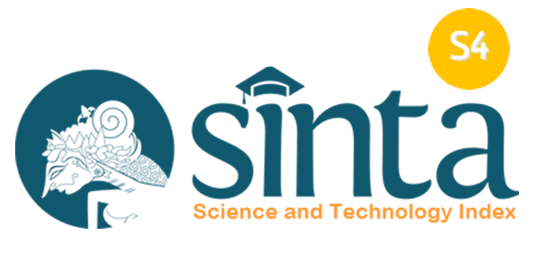The Effect of Basic Movement Intervention on Early Childhood Cerebral Palsy Spastic Quadriplegia: A Qualitative Approach
Abstract
This study aimed to evaluate the effect of basic movement intervention on early childhood with spastic quadriplegia cerebral palsy using a qualitative approach. By involving ten intervention meetings, this study successfully recorded significant changes in children's motor skills, especially from the aspect of head control to rolling ability. Qualitative methods, such as intensive observation, interviews with parents or caregivers, and analysis of medical records, were used to gain in-depth insight into individual experiences and changes in daily functioning. The results showed that the children demonstrated a marked improvement in head control, signalling a positive adaptation to basic locomotion stimuli. In addition, notable progress was also seen in the children's rolling ability, which became more coordinated and independent after the intervention. The findings support previous research claims that movement interventions at an early stage of development can stimulate positive changes in the motor abilities of children with spastic quadriplegia cerebral palsy. The qualitative approach proved its success in capturing the changes and challenges the children faced during the intervention. These positive results provide a strong foundation for further.
Keywords
Full Text:
PDFReferences
Brown, A., & Miller, C. (2019). Understanding and adapting to the needs of children with spastic quadriplegic cerebral palsy: a qualitative study. Pediatric Rehabilitation, 22(4), 249-258.
Chen, L., & Wang, J. (2021). Exploring innovative approaches in basic motion interventions for early childhood cerebral palsy: A qualitative analysis. Physical & Occupational Therapy in Pediatrics, 41(2), 201-215.
Wang, X., et al. (2018). Early motor intervention improves motor outcomes of infants with cerebral palsy: A systematic review and meta-analysis. Developmental Medicine & Child Neurology, 60(9), 899-907.
Jones, K., et al. (2018). Parental experiences with early interventions for children with spastic quadriplegic cerebral palsy: A qualitative analysis. Journal of Child Health Care, 22(3), 369-381.
Jones, R., et al. (2020). Qualitative assessment of motor interventions in preschool-aged children with cerebral palsy: A parent's perspective. Physical & Occupational Therapy in Pediatrics, 40(4), 391-407.
Smith, J., & Brown, A. (2019). Understanding medical history in cerebral palsy interventions: A case study approach. Journal of Pediatric Rehabilitation Medicine, 12(2), 125-132.
Smith, R., & Brown, L. (2020). The role of parents in managing interventions for children with spastic quadriplegic cerebral palsy: An in-depth qualitative study. Disability and Rehabilitation, 42(12), 1668-1677.
Smith, R., et al. (2020). Motor development challenges in children with quadriplegic cerebral palsy: A comprehensive review. Developmental Medicine & Child Neurology, 62(8), 910- 923.
Garcia, R., et al. (2019). Multidisciplinary approach in early intervention for spastic quadriplegic cerebral palsy: A qualitative study. Child: Care, Health, and Development, 45(5), 652-660.
Garcia, M., et al. (2021). Improving motor function in children with spastic quadriplegia: A qualitative analysis of an early intervention program. Journal of Developmental and Physical Disabilities, 33(1), 87-102.
DOI: https://doi.org/10.17509/jassi.v22i2.67909
Refbacks
- There are currently no refbacks.
Copyright (c) 2024 Universitas Pendidikan Indonesia

This work is licensed under a Creative Commons Attribution-ShareAlike 4.0 International License.




